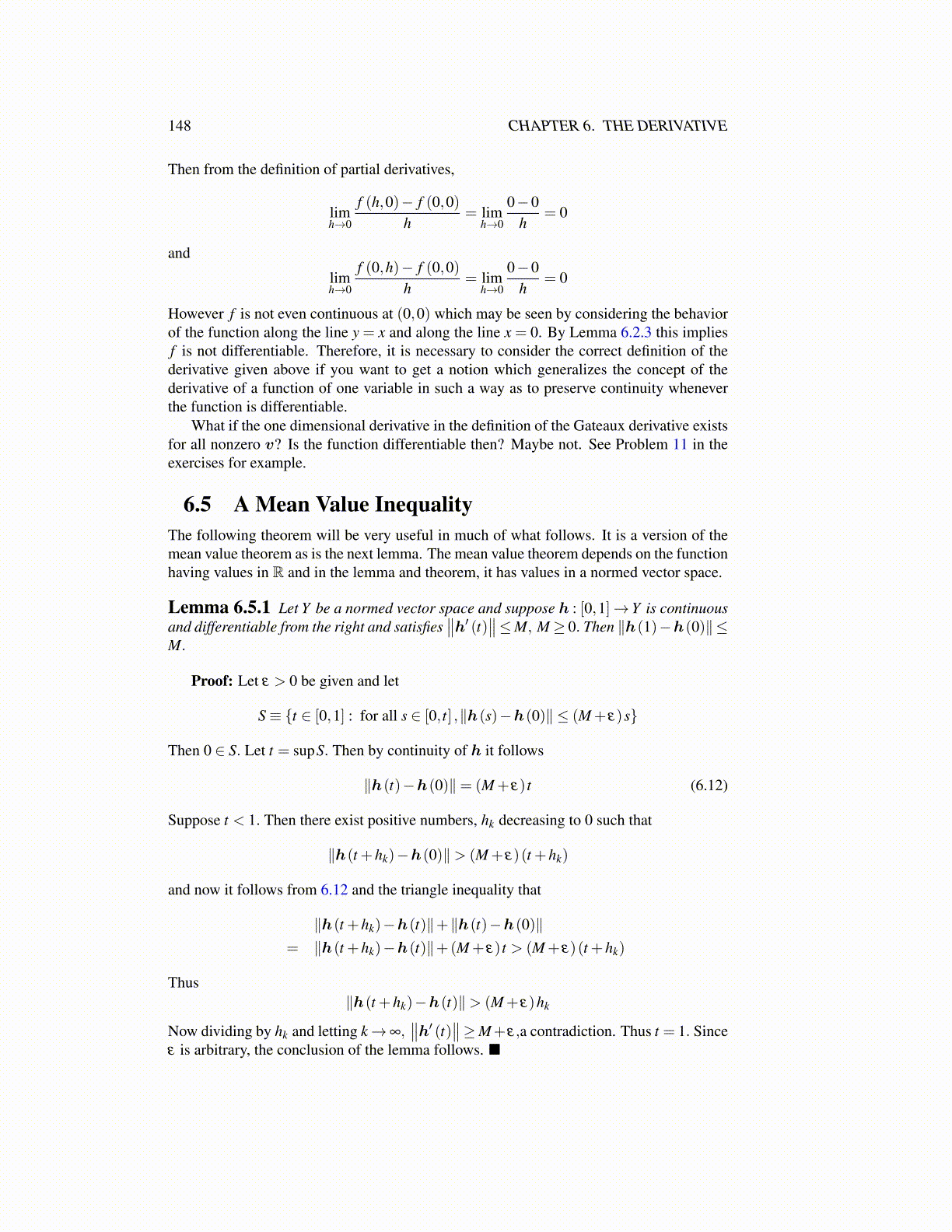
148 CHAPTER 6. THE DERIVATIVE
Then from the definition of partial derivatives,
limh→0
f (h,0)− f (0,0)h
= limh→0
0−0h
= 0
and
limh→0
f (0,h)− f (0,0)h
= limh→0
0−0h
= 0
However f is not even continuous at (0,0) which may be seen by considering the behaviorof the function along the line y = x and along the line x = 0. By Lemma 6.2.3 this impliesf is not differentiable. Therefore, it is necessary to consider the correct definition of thederivative given above if you want to get a notion which generalizes the concept of thederivative of a function of one variable in such a way as to preserve continuity wheneverthe function is differentiable.
What if the one dimensional derivative in the definition of the Gateaux derivative existsfor all nonzero v? Is the function differentiable then? Maybe not. See Problem 11 in theexercises for example.
6.5 A Mean Value InequalityThe following theorem will be very useful in much of what follows. It is a version of themean value theorem as is the next lemma. The mean value theorem depends on the functionhaving values in R and in the lemma and theorem, it has values in a normed vector space.
Lemma 6.5.1 Let Y be a normed vector space and suppose h : [0,1]→Y is continuousand differentiable from the right and satisfies
∥∥h′ (t)∥∥≤M, M≥ 0. Then ∥h(1)−h(0)∥≤M.
Proof: Let ε > 0 be given and let
S≡ {t ∈ [0,1] : for all s ∈ [0, t] ,∥h(s)−h(0)∥ ≤ (M+ ε)s}
Then 0 ∈ S. Let t = supS. Then by continuity of h it follows
∥h(t)−h(0)∥= (M+ ε) t (6.12)
Suppose t < 1. Then there exist positive numbers, hk decreasing to 0 such that
∥h(t +hk)−h(0)∥> (M+ ε)(t +hk)
and now it follows from 6.12 and the triangle inequality that
∥h(t +hk)−h(t)∥+∥h(t)−h(0)∥= ∥h(t +hk)−h(t)∥+(M+ ε) t > (M+ ε)(t +hk)
Thus∥h(t +hk)−h(t)∥> (M+ ε)hk
Now dividing by hk and letting k→∞,∥∥h′ (t)∥∥≥M+ε,a contradiction. Thus t = 1. Since
ε is arbitrary, the conclusion of the lemma follows. ■